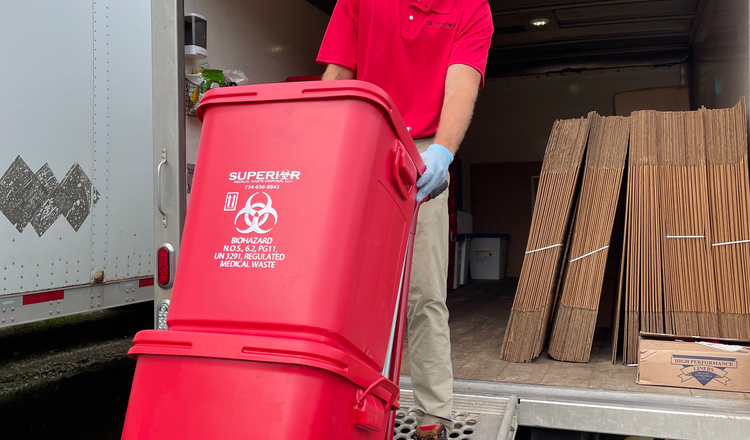The importance of knowing how and what to separate when disposing of waste!
One of our most commonly asked questions is what exactly goes into the red biohazard bag? We see this most frequently with new businesses who are just being introduced to medical waste and the proper way of disposing it. We also see this in businesses who have not been properly trained and informed on what exactly goes into a biohazard container.
We will go over how you can differentiate normal waste and regulated medical waste, what you should be putting in the red biohazard bags, and how we can increase our knowledge.
Normal Waste Vs. Regulated Medical Waste:
Regulated medical waste (RMW) is any waste that has come in contact with any potential blood or infectious material. Normal waste or garbage is your everyday household items that you can dispose of in your personal trash.
Normal Waste:
- Food wrappers
- Mail papers
- Paper receipts
- Food scraps
- Other paper materials
Regulated Medical Waste:
- Blood vials
- Sharps
- Bandages/cloths that contains blood
- Discarded Vaccines
- Cerebrospinal fluid
- Synovial fluid,
- Pleural fluid, peritoneal fluid, pericardial fluid, amniotic fluid, etc.
What goes in the Red Liner Bag?
The regular personal trash that we listed above is what does NOT go into the red liner bags. That can go in your normal trash cans. What we listed above as regulated medical wast (RMW) DOES go into the red liner bag. We have listed it below again to make sure we are all on the same page of what exactly can go into the red liner bags and containers.
Regulated Medical Waste:
- Blood vials
- Sharps
- Bandages/cloths that contains blood
- Discarded Vaccines
- Cerebrospinal fluid
- Synovial fluid,
- Pleural fluid, peritoneal fluid, pericardial fluid, amniotic fluid, etc.
How can we learn more?
We will continue to stress the importance of OSHA Training! Not only for you but for your office and employees. The number one reason is for safety. Keep your employees and yourself safe. However, it is key to know what you should be putting in your biohazard containers and what not to put in them. Our drivers and our management team can help train you and provide demonstrations. We can also put together a medical waste management plan for you to follow.
Summary:
We now know what the difference between normal trash/waste and regulated medical waste (RMW). We now know what should and shouldn’t be put in our medical waste containers. And we know the importance of being properly trained.
